



Net metering is an electricity policy for consumers who own (generally small) renewable energy facilities, such as wind, solar power or home fuel cells. "Net", in this context, is used in the sense of meaning "what remains after deductions" -
Net Metering is generally a consumer-
In the U.S.A., as part of the Energy Policy Act of 2005, under Sec. 1251, all public electric utilities are now required to make available upon request net metering to their customers.
‘‘(11) NET METERING.—Each electric utility shall make available upon request net metering service to any electric consumer that the electric utility serves. For purposes of this paragraph, the term ‘net metering service’ means service to an electric consumer under which electric energy generated by that electric consumer from an eligible on-
New Jersey/and Colorado are widely considered to have the best net-
In Canada, some Canadian provinces have net metering programs.
The United Kingdom government is reluctant to introduce the net metering principle because of complications in paying and refunding the value added tax that is payable on electricity, but pilot projects are underway in some areas.
Time of use metering
Time of use (TOU) net metering employs a specialized reversible smart (electric) meter that is programmed to determine electricity usage any time during the day. Time-
United States
Several bills are pending that require utilities to provide net metering. They range from H.R. 729 which allows up to 2% net metering to H.R. 1945 which has no limit, but does limit residential users to 10 kW, a relatively low limit compared to New Jersey and Colorado's 2 MW limit, the two states with laws most favorable to consumers. A comparison of the 38 states plus Washington D.C., which have net metering, gives 5 an "A" (New Jersey, Colorado, Pennsylvania, Maryland and California) and 5 an "F" (Utah, District of Columbia, Georgia, North Carolina, and Wisconsin).
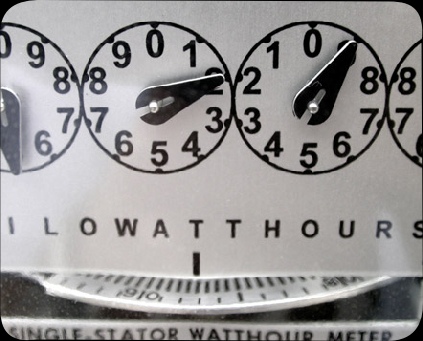

A home owner watching her electric meter run backwards as her solar array puts energy into the electric grid.
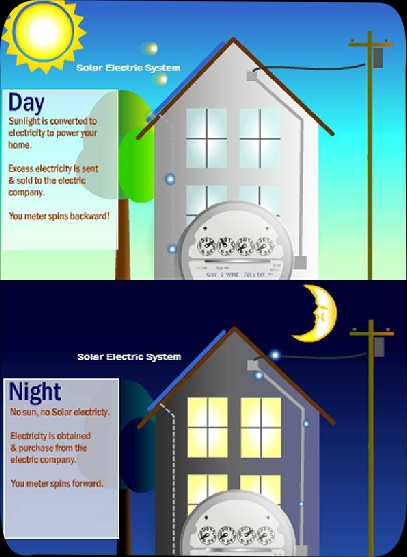
Net metering creates electrical power during the day. The power needed by the building for operation is used directly from the electricity being produced. All other electricity that is surplus and that does not get consumed by the building is pushed into the grid. The power grid acts mush like a battery system would. It stores electrical power that was produced by the home renewable energy system until it is needed again. At night, when the solar array is not collecting electrical energy from the sun it draws the electrical power out of the grid that was stored in it during the day.
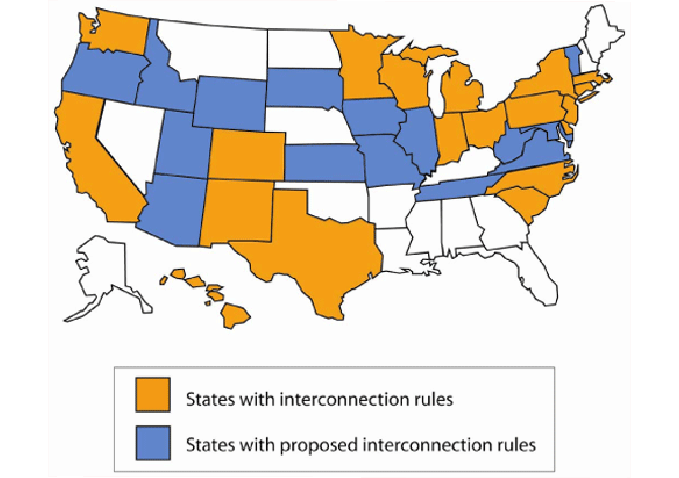
California
Consumer Net Metering is available in California and is presumed to be highly favorable to smaller systems that displace the highest cost electricity, and systems wherein the user's demand load may be managed so that there is a net production of electricity during high cost periods. This can be done, for example, by chilling water during off-
Ahiccup has occurred in California legislation (SB1 -
Colorado
No limit on enrollment, system size is limited to 2 MW, excess is credited to customer's next bill; utility pays customer at end of calendar year for excess kWh credits at the average hourly incremental cost for that year.
Florida
Passed by Florida Public Service Commission 4 March 2008, system size is limited to 2 MW, with compensation up to the account's electrical consumption as trued up at end of calendar year. Excess production is not compensated.
Kansas
Kansas does not have a consumer Net Metering incentive, but does have a renewable metering incentive on the wholesale level that provides the wholesale commerce of renewable energy at 150% of the avoided cost. Thus, the incentive one receives in this case is dependent not upon the price of retail electricity per kWh, but upon the price of wholesale electricity.
The Kansas Solar Electric Co~operatives [K-
The K-
This translates to approximately 100,000,000 sq ft (9,300,000 m2) of BI-
The foundational structure for the K-
The K-
New Jersey
No limit on enrollment, system size is limited to 2 MW, excess is credited to customer's next bill at retail rate; purchased by utility at avoided-
North Carolina
In North Carolina initial net metering rules were put in place in 2005 to prohibit systems that include backup battery power, but due to consumer feedback the restriction was lifted in July 2006.
Texas
In Texas the limit on system size are 100 kW for qualifying facilities; 50 kW for renewables. The treatment of net excess is purchased by utility for a given billing period at avoided-
Market rate net metering
In market rate net metering systems the user's energy use is priced dynamically according to some function of wholesale electric prices. The users' meters are programmed remotely to calculate the value and are read remotely. Net metering applies such variable pricing to excess power produced by a qualifying systems.
Market rate metering systems will be implemented in California starting in 2006 and under the terms of California's net metering rules will be applicable to qualifying photovoltaic and wind systems. Under California law the payback for surplus electricity sent to the grid must be equal to the (variable, in this case) price charged at that time. It can never be negative, meaning you cannot make money from selling the electricity back. If you generate more electricity than you use then over a period of a month you will be billed zero and not make any money, in effect you give away your extra energy if you do not use it.
Net metering enables relatively small systems to result in zero annual net cost to the consumer provided that the consumer is able to shift demand loads to a lower price time, such as by chilling water at a low cost time for later use in air conditioning, or by charging a battery electric vehicle during off-
Net purchase and sale
Net purchase and sale is a different method of providing power to the electricity grid that does not offer the price symmetry of net metering, making this system a lot less profitable for home users of small renewable energy systems.
Under this arrangement, two uni-
Germany and Spain, on the other hand, have adopted a price schedule, or Feed-
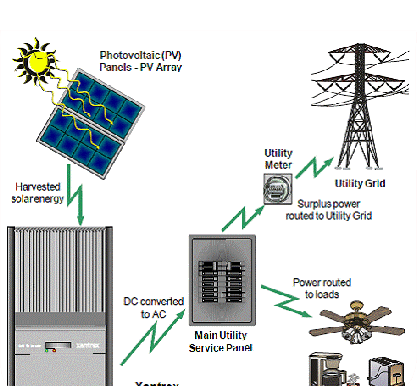
Basic net metered configuration.
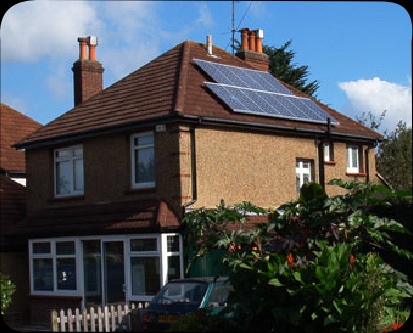
A net metered house.
